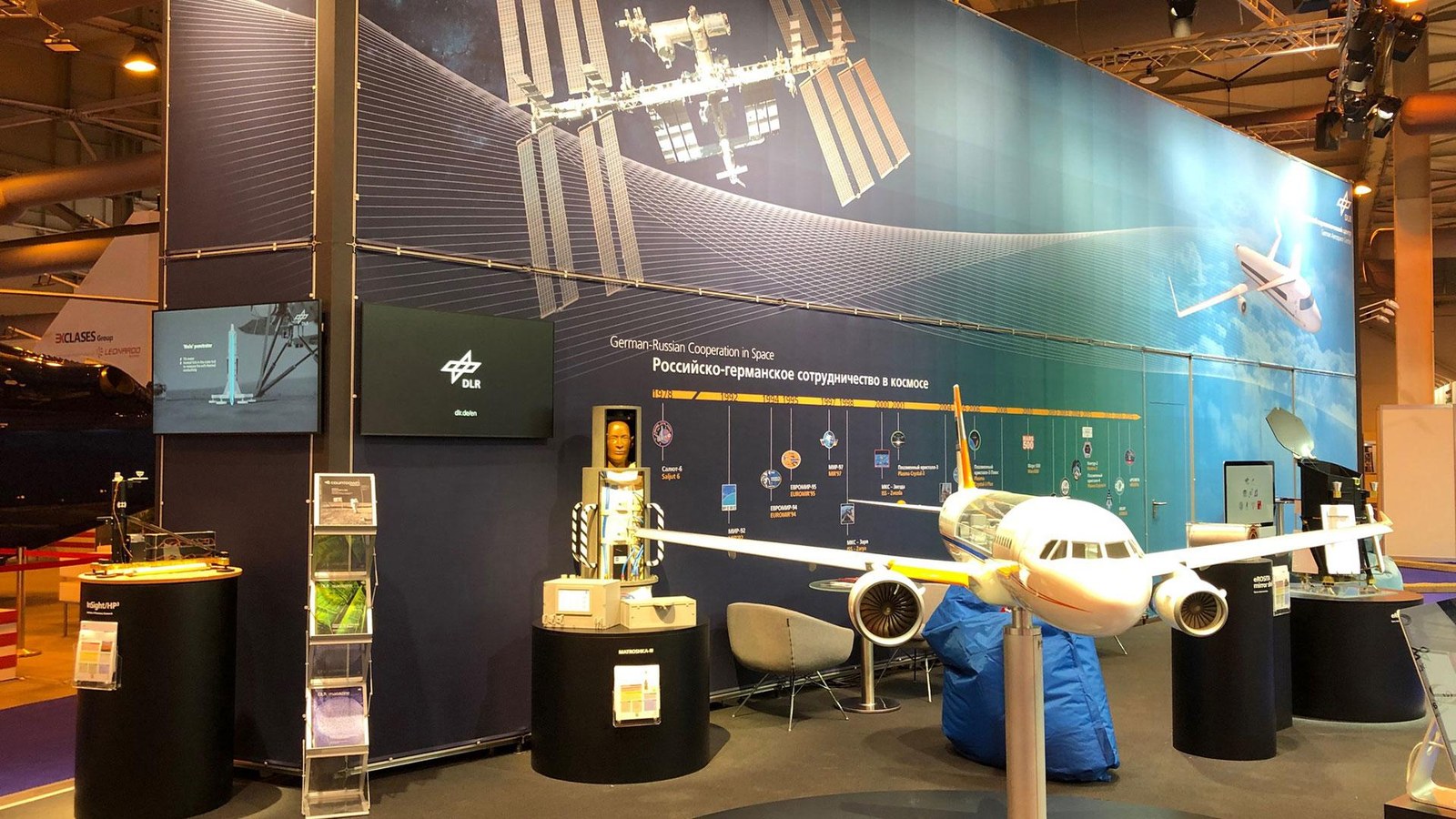German aerospace research at MAKS in Moscow
- DLR will present its current contributions to aerospace research at MAKS in Moscow.
- The focus is on German-Russian projects, such as the eROSITA X-ray telescope and a phantom called ‘Matroshka’ used for research into radiation exposure in space.
- Focus: Aeronautics, space
The German Aerospace Center (Deutsches Zentrum für Luft- und Raumfahrt; DLR) has traditionally attended the International Aviation and Space Salon MAKS, Russia's national aerospace show, which takes place every two years in Zhukovsky, Moscow. This year the event will take place from 27 August to 1 September 2019 and will be DLR's eighth appearance. At the event, DLR will showcase concepts and technology focusing on future spaceflight and aviation over an exhibition space of approximately 800 square metres. The highlights of their display will include projects with German-Russian cooperation.
"There is a long history of successful collaboration between DLR and Russian research institutions in the field of aerospace," says DLR Executive Board Member for Space Research and Technology Hansjörg Dittus. "This year we are delighted to be able to present, among other things, the joint German-Russian Matroshka project, an experiment to measure radiation exposure on the ISS, which is testament to our many years of close collaboration."
Knowledge for tomorrow at the International Aviation and Space Salon MAKS
eROSITA
The Spectrum-Roentgen-Gamma (SRG) space probe with the German eROSITA x-ray telescope and its ART-XC Russian partner instrument were launched successfully from Baikonur Cosmodrom in Kazakstan on 13 July 2019 on board a Proton launcher. Positioned at the second Lagrange Point, eROSITA (extended Roentgen Survey with an Imaging Telescope Array) is embarking upon the largest cosmic inventory of the hot Universe. The space telescope will use its seven x-ray detectors to observe the entire sky and search for heat sources such as galaxy clusters, active galactic nuclei, supernova remnants, X-ray binaries and neutron stars. In particular, this German telescope is intended to help solve the mystery of Dark Energy.
Matroshka
Analysing radiation exposure during space missions is not simply a matter of looking at the quantity of different types of radiation, but also examining their biological impact. A 'phantom' has been placed both inside and outside the ISS in order to address these questions. This phantom is 'Matroshka', a special kind of dummy developed and built by the DLR Institute of Aerospace Medicine. The ‘phantom’ itself – consisting of a head and upper body – mimics a human torso. It has a skeleton and is made of tissue-like materials. Active and passive radiation detectors are placed in over 800 different places inside the mannequin – including the positions of the human organs – to measure radiation.
InSight
The NASA InSight landing probe is examining the structure of Mars’ crust, mantle and core and studying the thermal development of Mars directly from the surface of the planet. Investigating the interior of our neighbouring planet should help us to answer fundamental questions about the early history of the inner Solar System and its four planets: Mercury, Venus, Earth and Mars. The results of InSight should also give us a better understanding of the formation, evolution and structure of extrasolar planets. InSight uses the German-developed HP3 (Heat Flow and Physical Properties Package) probe to measure the planet’s heat flow directly from the Martian surface, via a five-metre-deep borehole.
Airbus A320 ATRA
The largest member of DLR's fleet, the Airbus A320-232 ‘D-ATRA’, has been in service for DLR since late 2008. ATRA (Advanced Technology Research Aircraft) is a versatile and modern flight research platform that is setting new benchmarks for airborne test vehicles in European aviation research. The different areas of application are demonstrated by the models on display.
DLR has developed the Wake Encounter Avoidance and Advisory System (WEAA), which is used on ATRA, to prevent the aircraft from entering wake vortices. It gives pilots in the cockpit warnings and course deviation recommendations for this purpose.
The increase in worldwide air traffic means that increasing aerodynamic performance during the take-off and landing stages is becoming increasingly important, as is the need to reduce aircraft noise. The design and development of complex flap and transmission systems, which have a considerable impact on take-off and landing properties and on aircraft noise emissions, have been successfully tested using ATRA.



